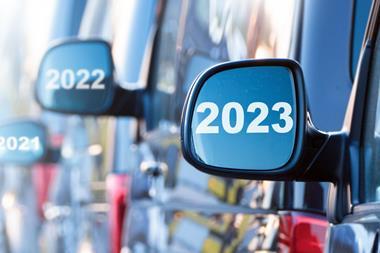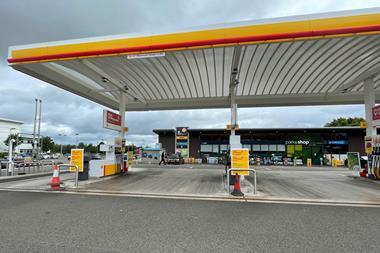This time last year we were coming to the end of a major restructuring of the industry, as private equity funding was driving the big dealer groups to acquire a large number of sites being sold off by the oil companies. This activity has slowed down over the past year and the UK Fuel Market 2017 vs 2016 on the right shows how the sector has returned to familiar trends.
The number of oil company owned sites has remained more or less flat compared to the huge reduction of 344 sites seen in the previous year. After three years of growth in numbers, the dealer sector has returned to showing a slight reduction in numbers. And, after a few quiet years, some of the hypermarket groups have been fairly active again.
Generally, continuing on from last year’s Fuel Market Review, there is a lot of confidence in the sector, and all the signs continue to be positive for the retail forecourt sector in the UK. There are more vehicles on the UK’s roads, retail fuel volumes have grown, margins have been holding up, and there has been a lot of investment over the past 12 months. There is significant demand for site acquisition which has outstripped supply over the past year and consequently buying prices have risen.
After a record year for new vehicle registrations in 2015, 2016 achieved another record with 2.7 million new vehicles on the road. This marked five consecutive years of growth, but industry pundits are suggesting that in 2017 we will start to see a fall. The overall number of vehicles on the roads increased towards 37 million in 2016 and these vehicles have covered more miles than ever before. The current overwhelming issue in the new and used vehicle sector is the rapid move away from diesel and nobody seems to know where this will lead over the next few years for the car buyers and drivers, for the forecourts that supply the fuel, and for the oil companies and refiners that produce it.
Reports from the Department for Business, Energy and Industrial Strategy, and HM Revenue and Customs, have indicated increased road fuel volumes in 2016, following on from increases in the previous two years. The headline figure is a 2.2% overall increase in road fuel volumes compared with 2015 an increase of 1bn litres over 2015. The road fuels total for 2016 was reported as 46.5bn litres. The government has stopped reporting road fuel volumes by sector and this figure includes HGV diesel, which we estimate at about 10.7bn litres, leaving a motor fuel volume through the network of 8,425 forecourts of just under 36bn litres for 2016.
Over the past year Experian Catalist has visited and resurveyed some 5,000 sites across the UK and this report is our view of the retail forecourt market. Looking back 10 years to 2007, some 14,800 open forecourts were reported in the UK, and 10 years on there are 8,425 sites a 43% reduction in numbers. This time last year the figure was 8,487 so there has been a net reduction of 62 sites over the past year. This net loss however covers some quite significant changes with new-builds, sites re-opening as well as closures.
In terms of new investment in 2016, 53 new-build sites were recorded over the year, up from 29 in 2015, with 28 by the major multiple retailers (24 Asda, four Sainsbury’s), plus four additional Costco locations. In 2016 there were 15 new dealer sites (up from two in 2015) and five new oil company sites (up from three in 2015). In addition, 36 sites re-opened after a period of closure (similar to 2015 and 2014). With respect to closures, 151 sites were recorded as closing during the past 12 months (up from 79 in 2015) six company owned and 143 dealers.
Despite the oil companies having stopped their major disposal programmes, the big five dealer groups (groups with more than 100 sites) still managed to increase their networks by buying up smaller groups as shown in the dealer group table on page 34. The exception to this was the Co-op Group which reduced its network by 40 sites in 2016 (mainly sold to Rontec) at the same time as undertaking a major redevelopment programme on the remaining sites. The Co-op also moved 18 sites to own branding in 2016 and these sites are included in the increase in hypermarket sites in 2016.
These big five dealer groups, together with five other site owners/operators the four multiple retailers plus BP Express Shopping make up a group of 10 owners/operators that have significant influence in the UK market as they sell 68% of the retail fuel volume and 55% of the forecourt shop sales from 42% of the sites (3,530 sites).
From a property perspective, forecourt and convenience values are continuing to hold up better than in most other sectors and the influx of private equity capital provided a boost to confidence in the sector. Barber Wadlow reported a 9% increase in the forecourt property value index in 2016, the fifth consecutive year of growth. Christies also commented that forecourt property prices continued to be on an "upward trajectory". Compared with high street retail, the forecourt sector has performed well and again we had only one company that had financial issues in 2016 from among the major players. High Noon entered receivership and its sites were quickly snapped up by Euro Garages and Motor Fuel Group.
Fuel prices have mainly been out of the watchful eye of the press over the past year and the chart (left) shows the roller-coaster ride since spring 2015 when unleaded prices were about 117ppl. Prices fell until early 2016 when they were close to £1 per litre for both unleaded and diesel. Prices have subsequently climbed back again to around 117ppl in May 2017 with the diesel differential hovering between 1-2ppl. Every so often during the past year, the hypermarkets have launched a short-lived price war, but the one area noticeable by its absence recently has been the lack of promotional activity by the hypermarkets, such as money-off vouchers.
Market Structure
The overall numbers have changed little from the last review with 8,425 open retail sites in the UK, and a total retail motor fuel volume of 35.7bn litres. The average fuel volume (continued on page 42) was 4.26mlpa per site, and total shop sales were £4.4bn an average per site of £11,500 per week from an average 70sq metre shop.
There are now 5,658 independent dealer sites in the UK (a net decrease of 122 sites compared to the last review) and approaching 50% of these sites are operated by dealer groups with three sites or more. The average dealer site now sells 2.4mlpa and turns over £9,500 per week through a 65sqm shop.
The hypermarkets have 18% (1,510) of the sites with a 44.3% share of motor fuel sales, an increase of 0.5% over 2015, and they are the single-largest sector in terms of fuel sales by some degree. Asda has been the most active, adding 25 sites over the year the majority are new automat sites built on part of the car park of existing large stores. Sainsbury’s also added a number of new sites in 2016, including three automats, taking its unattended total to seven sites. In 2016 Costco also added four automat sites, taking its total to eight sites.
The dealer sector now has 67% (5,658) of the sites and has seen a minor decrease in motor fuel market share over the past year to 38%. Over the past year 143 dealer sites closed with 45 from the unbranded sector and 37 from Certas Energy brands.
After a major decrease last year, the oil company owned sector has remained broadly stable this year, with a net increase of five sites. The oil company sites now represent 15% (1,257) of the sites and their market share has stabilised at 17.7%. Essentially, the company owned sector is Shell with 568 sites, BP with 310 sites and Esso with the 198 Tesco Alliance sites. Applegreen is next with 74 company sites.
We have revised the UK standard regions in 2016 to come into line with government statistics this year, so the figures cannot be compared with previous years. The revised regional breakdown of the forecourt sector continues with the market dominated by the South East with 15.5% of the UK’s motor fuel and 16.8% of forecourt shop sales. Northern Ireland has the smallest regional market share in terms of fuel volume (2.6%) from 566 sites (7% of the UK sites).
The number of unmanned sites (automats) has increased significantly by 30 sites over the past year, primarily as a consequence of the Asda programme, which now has 151 unmanned forecourts. The total number of unmanned sites in the UK is now 199.
Market Shares and Brands
For the second year in succession, the brand with the largest increase in number of sites supplied over the past 12 months was Esso, with an increase of 43 sites to 1,081 sites. Esso, BP and Shell are the only brands with more than 1,000 branded sites. Essar increased its site numbers from seven to 29 over the past 12 months. Applegreen also added a further 10 sites to 77 sites, although many of them are partially branded as ’Low Prices Always’ rather than the full Applegreen. The brands with the largest losses were Certas Energy (-83) and Texaco (-49). The unbranded sites decreased by 31 to 624 and they remain most vulnerable to a squeeze on margins and to the pressures on the environmental factors surrounding forecourt operation.
In the dealer sector, Esso and Essar show the largest increases. Esso has increased its dealer presence by 43 sites and Essar by 22 sites. However, BP still supplies the most dealer sites with 973 followed by Esso with 883, with Certas Energy now in third place with 783, and Texaco in fourth place with 763 sites. In terms of motor fuel market share in the dealer sector, BP continues to lead the way with 26%, with Esso next, up 1.4% to 22.6%, then Texaco with 14.3%.
Forecourt Shops
Overall the forecourt shop sector has continued at around £4.4bn sales per year. There are now over 2,287 sites with convenience stores (up by 127 sites from 2015) and they retail 56% of forecourt shop sales. The average convenience store turns over £22,000 per week from a 138sq m store.
In the dealer sector total shop sales are over £2.5bn per year (57% of the overall forecourt shop sales), 88% of sites have a shop and 26% (1,472) have a full convenience store, an increase of 77 sites on thelast review.
In terms of forecourt shop fascias, Spar has overtaken Tesco as the leading forecourt shop fascia, with 1,054 shops selling 16.7% of the forecourt shop sales. Spar has increased its presence on the forecourt by 141 shops in 2016. The Tesco/Tesco Express shop fascia is in second place, remaining on 691 sites (including the Esso/Tesco Alliance sites as well as the shops on their own Tesco forecourts), and they are just behind Spar with a 16.5% share of the £4.4bn forecourt shop market.
At the other end of the scale there are 750 forecourts with no shop, of which 463 are dealer sites a reduction of 11 from the previous year. More than 16% of forecourt shops (1,232) have no brand on their shop, although this is 130 less than last year. In terms of regional distribution, the South East dominates with 16.8% of forecourt shop sales, and the next regions are Scotland and East England, each with 10.5% of the shop sales.
Over the past year Morrisons has stopped its trial of Morrisons shops on Motor Fuel Group forecourts and is now testing with Rontec. Sainsbury’s has put its Sainsbury’s Local Shops on five Euro Garages forecourts which have traditionally been with Spar shops. More recently, MRH has just announced its intention to trial with Co-operative shops on a number of its forecourts. The pending acquisition of Booker by Tesco is likely to have significant implications on the independent forecourt sector, if it is approved by the competition authorities. Booker is the main supplier to a number of the forecourt shop fascia brands, and with Tesco already on nearly 700 forecourt shops, the addition of the Booker-supplied fascia brands will be a challenge.
In summary, while there are a number of challenges facing the sector, I can finish with the same sentiment as last year in that everything is looking positive for the UK forecourt sector and the position of the independent dealer is looking better than ever.





























No comments yet